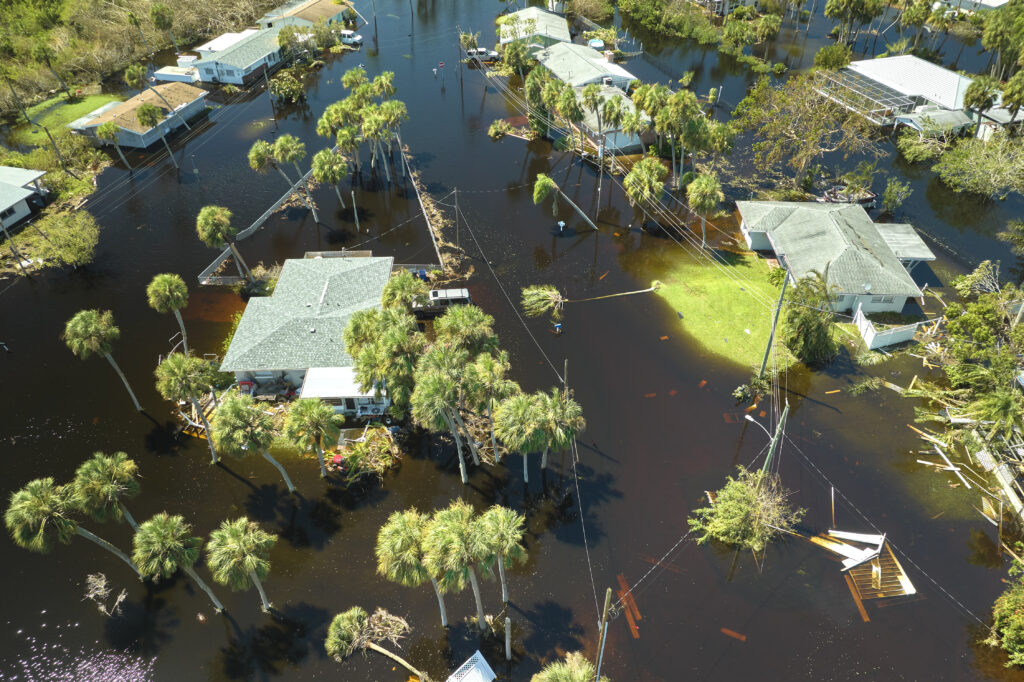
NIBS 2025 Moving Forward Report: Retrofitting for Resilience is a Shared, High-Return Investment
A new report from the National Institute of Building Sciences Consultative Council urges a united approach to protect communities from the escalating threat of environmental hazards.
On June 2, 2025, The National Institute of Building Sciences (NIBS) Consultative Council released a new report which presents a data-driven case for proactively retrofitting buildings and infrastructure within the U.S. 2025 Moving Forward Report: Retrofitting for Resilience outlines the urgent need for proactive investment in disaster mitigation strategies.
The NIBS Consultative Council, which includes representatives of architects, engineers, contractors and standards-developing bodies, serves as a non-partisan forum to address key challenges facing the built environment. Its annual Moving Forward Report aims to identify emerging issues and develop solutions to guide the industry and government.
The Escalating Cost of Natural Hazards
The report discusses the devastating financial and human losses across the U.S. caused by extreme weather events. The cumulative financial toll of weather-related hazards from 1980 to January 2025 has approached $3 trillion, a figure that only accounts for 403 events that each caused $1 billion or more in damages. The frequency and severity of these events are increasing; NOAA recorded an average of 23 billion-dollar hazards per year between 2020 and 2024, a sharp rise from the annual average of nine events between 1980 and 2024.

In 2024 alone, 27 separate billion-dollar hazards struck the U.S., including devastating hurricanes like Helene ($79.6 billion in damages) and Milton ($34.3 billion), wildfires, floods and 17 severe storm events. The report notes that these hazards have a profound impact on human life, homes, infrastructure and essential community lifelines.
The Compelling Business Case for Resilience
Despite the challenges, the report emphasizes that resilience is an achievable and economically sound goal. Citing the 2019 NIBS “Mitigation Saves” study, the report shows that every $1 invested in resilience measures can save up to $13 in future losses, with a national average of $4 to $11.
Research from the U.S. Chamber of Commerce and Allstate found that for every $1 invested in hazard preparedness, $6 is saved in damage costs and another $7 is saved in community economic recovery costs, for a total savings of $13. Adopting up-to-date building codes provides one of the most effective forms of mitigation, saving $11 for every $1 invested. These modern codes have vastly improved hazard resilience while adding only about one percent to construction costs compared to 1990 standards.
A 2023 study found that modern building codes reduced the expected spike in post-hurricane mortgage delinquency rates by approximately 50 percent. For commercial properties, the financial case is even more striking, as researchers found that for every $1 spent to protect structures from hurricane, wind and flood damage, a building owner’s exposure to property loss and business disruption fell by an average of $105.
A Call for Shared Responsibility and Incentives
A key point of the report is that the benefits of resilience extend far beyond the individual property owner. Stakeholders, including insurance companies, the mortgage industry, businesses and government agencies, all gain from mitigated damage and faster recovery. Therefore, the report advocates for a shared-cost model to overcome the financial hurdles that prevent many owners from undertaking retrofits.
To date, the insurance industry is the primary private sector entity providing incentives through premium discounts or by ensuring coverage availability for resilient homes. However, the NIBS Council argues that all beneficiaries should contribute to incentivizing these critical investments.
Recommendations from the Consultative Council
The report offers a clear roadmap for federal, state and local policymakers, as well as private industry, to foster a culture of resilience. The NIBS Council first recommends that all beneficiaries of resilient construction—including government agencies, insurers and lenders—should share in the expense of retrofitting buildings rather than placing the full burden on property owners. To facilitate this, federal, state and local governments should offer a range of tax incentives, such as income or property tax credits and sales tax exemptions, to offset the cost of retrofits. In addition, grant programs should be established to provide direct funds to communities and households at the highest risk of damage from natural hazards, which would save government agencies money in the long run.
The report also calls on private sector beneficiaries beyond the insurance industry, like the mortgage industry and local businesses, to identify ways to incentivize property owners’ investments in resilience. To further empower property owners, state and local governments should create tax-advantaged catastrophe savings accounts to help them with self-fund retrofits or post-hazard repairs.
Looking at technology, the report calls for federal agencies like the Department of Energy and the National Institute of Standards and Technology to receive funding to support R&D for stronger building materials and innovative construction methods, working in public-private partnerships to speed the adoption of new technologies.
Finally, the NIBS Council emphasizes that government agencies, trade associations and nonprofit organizations should collaborate to educate property owners and contractors on the benefits of resilience and available financing, supported by certification programs that train the construction workforce in resilient techniques.
For the building safety community, the message is clear: championing the adoption and enforcement of modern, resilient building codes is a foundational and cost-effective strategy for protecting lives, property and local economies from the inevitable disasters to come.
To read the 2025 Moving Forward Report, click here.
To learn more about how modern building codes support affordable, resilient housing, click here.





